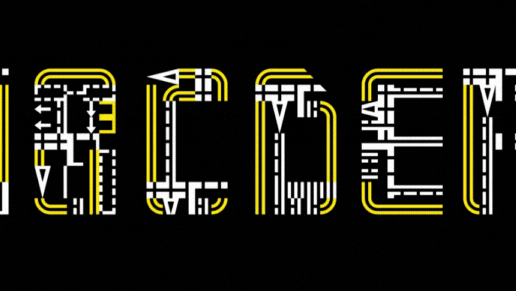Back Down the Road
ISTD Submission
Concept
‘Back Down The Road’ is a response to the ISTD brief ‘The Line’, which takes the reader on a journey through the years starting in the 1920s, where the first road marking was introduced in the United Kingdom in the form of a central white line. Its purpose it to educate the reader on the developments made in British road markings over the past century, shedding light into what some may see as an uninteresting topic.
While the reader follows the road that has been unfolded, they are taught about the meaning and history of a range of road markings, learning where and when certain lines were first trialled as well as their meanings defined by the highway code. The road on this poster contains sections from the 1920s, 30s, 40s, 50s, 60s and the 2000s, each filled with era-accurate road markings and vehicles in a legal road layout recognised by the highway code. Additional road safey information is seen alongside the decade descriptions, providing the reader with further insights on how the development of roads and their markings have impacted the safety of both pedestrians and road users.
Accompanying the main road is a map legend showing the names and illustrations of each displayed marking. This is necessary when following the road as the reader can cross reference the text in each decade with the markings.
Audience
‘Back Down The Road’ is aimed towards anyone trying to learn about British transport history as road markings play an integral part in our daily lives yet simultaneously go unnoticed and unappreciated. It can also be used as a visual aid to assist those trying to learn road safety and proper driver behaviour for a driving theory test in order to become a legal driver. Due to the information graphics used on the poster, it can be easily understood and followed by people of all ages, making it suitable for young children who prefer to learn through visual aids rather than text.
Deliverables
• Infographic Poster
•Poster Sleeve
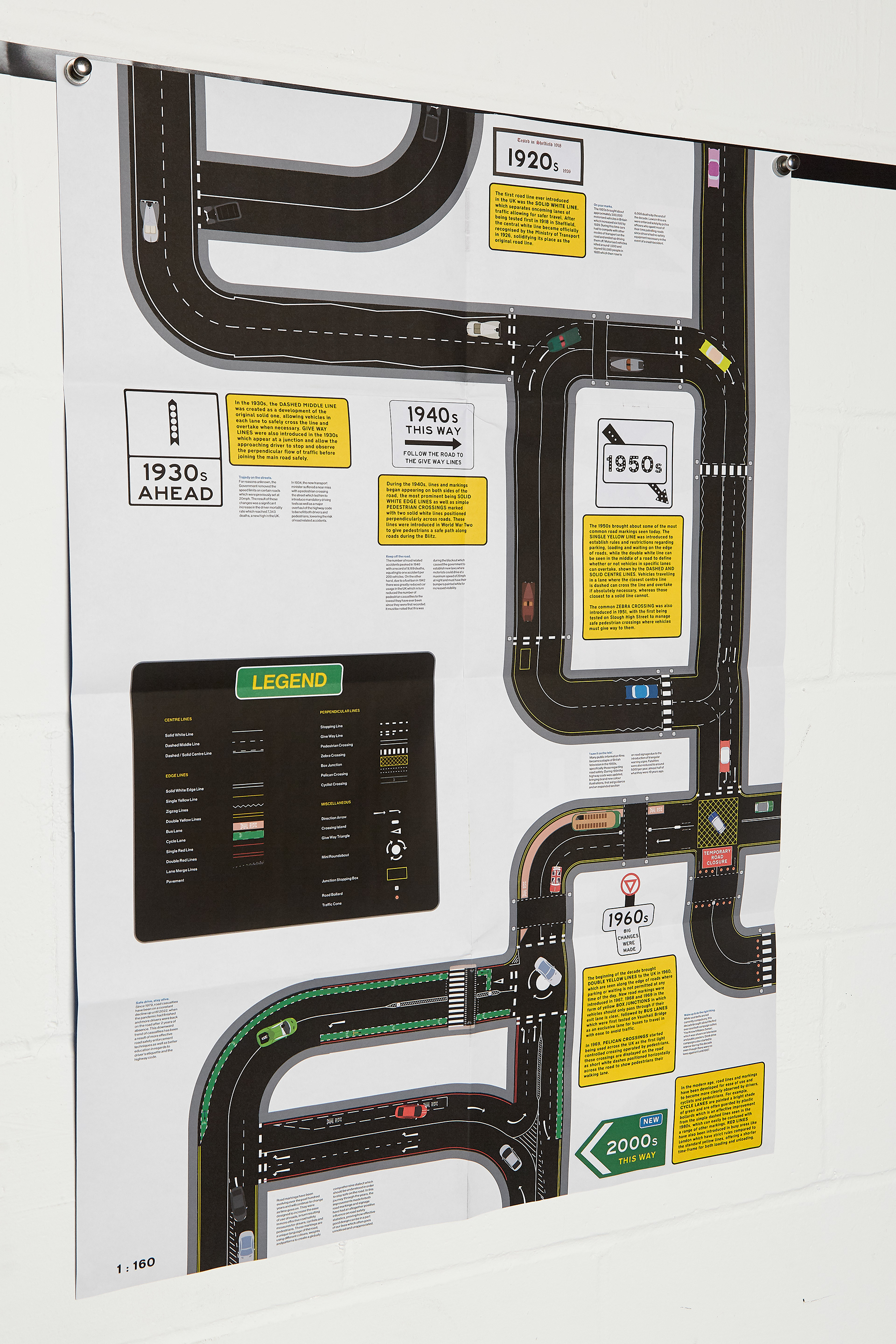

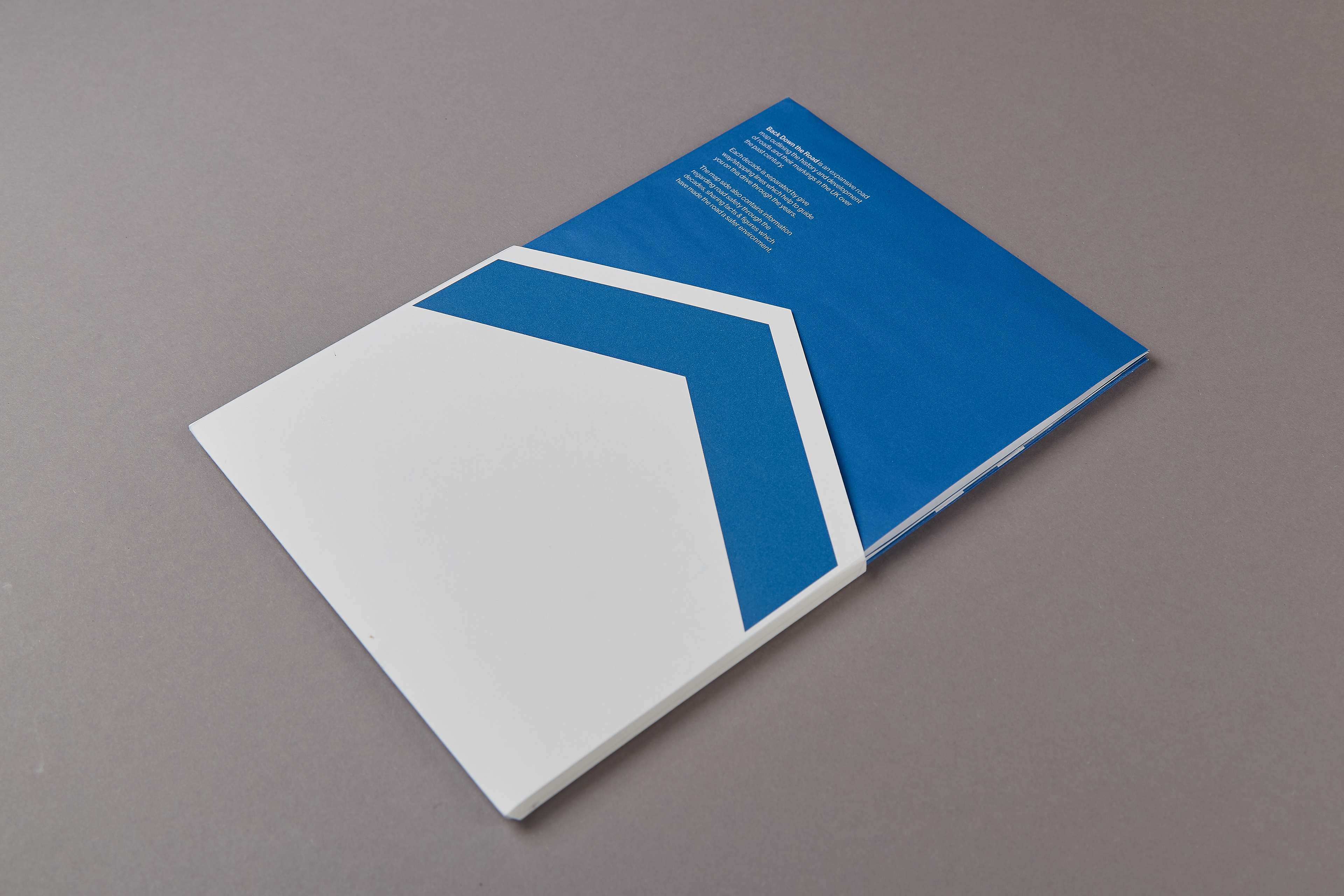
As part of my submission to the ISTD competition, I had to create a specification document for my outcome talking about my choice in colour, typography and layout, along with a strategy/description of my project. The final specification is shown below:








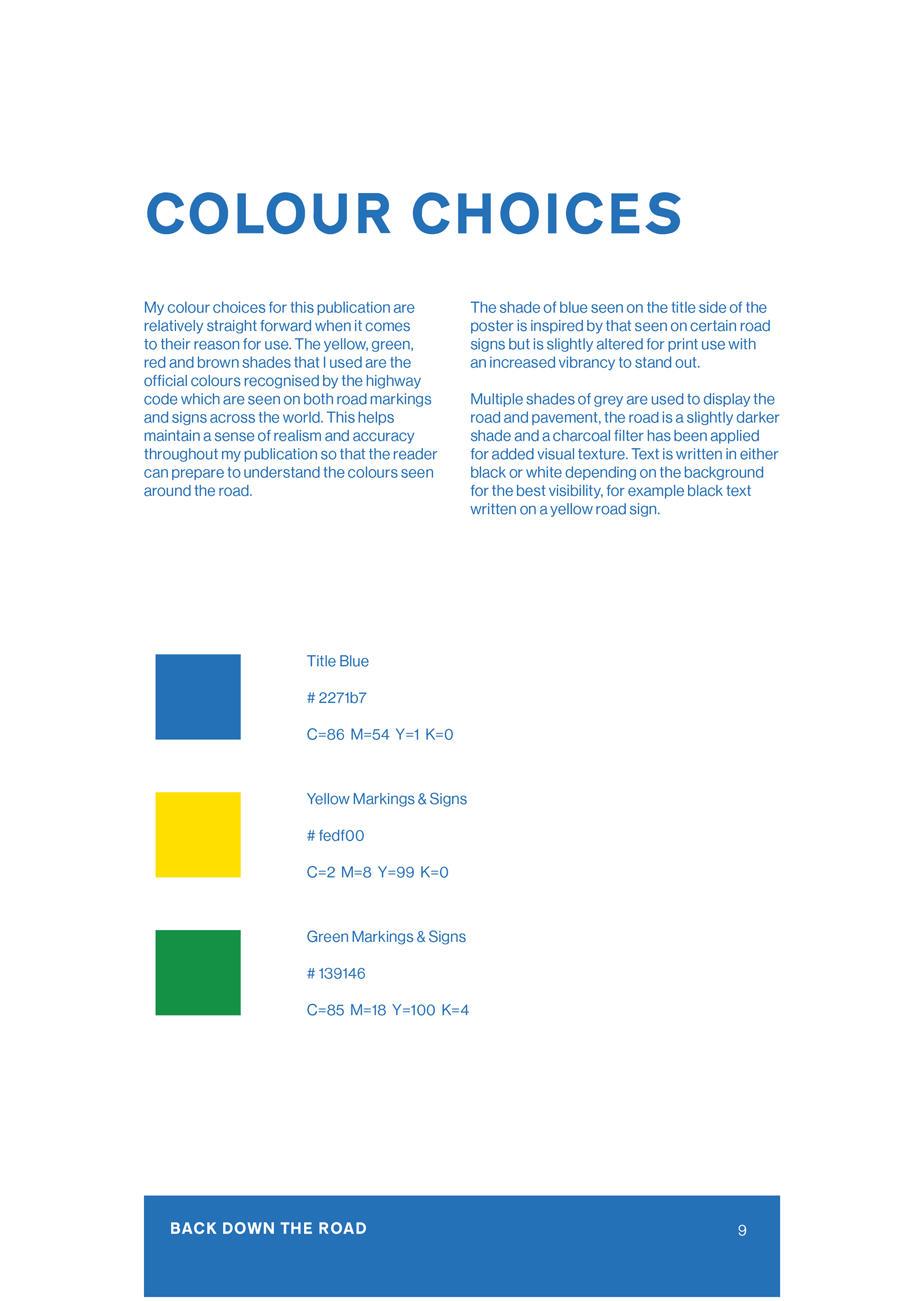





The Process:

Page layout using road furniture to establish hierarchy
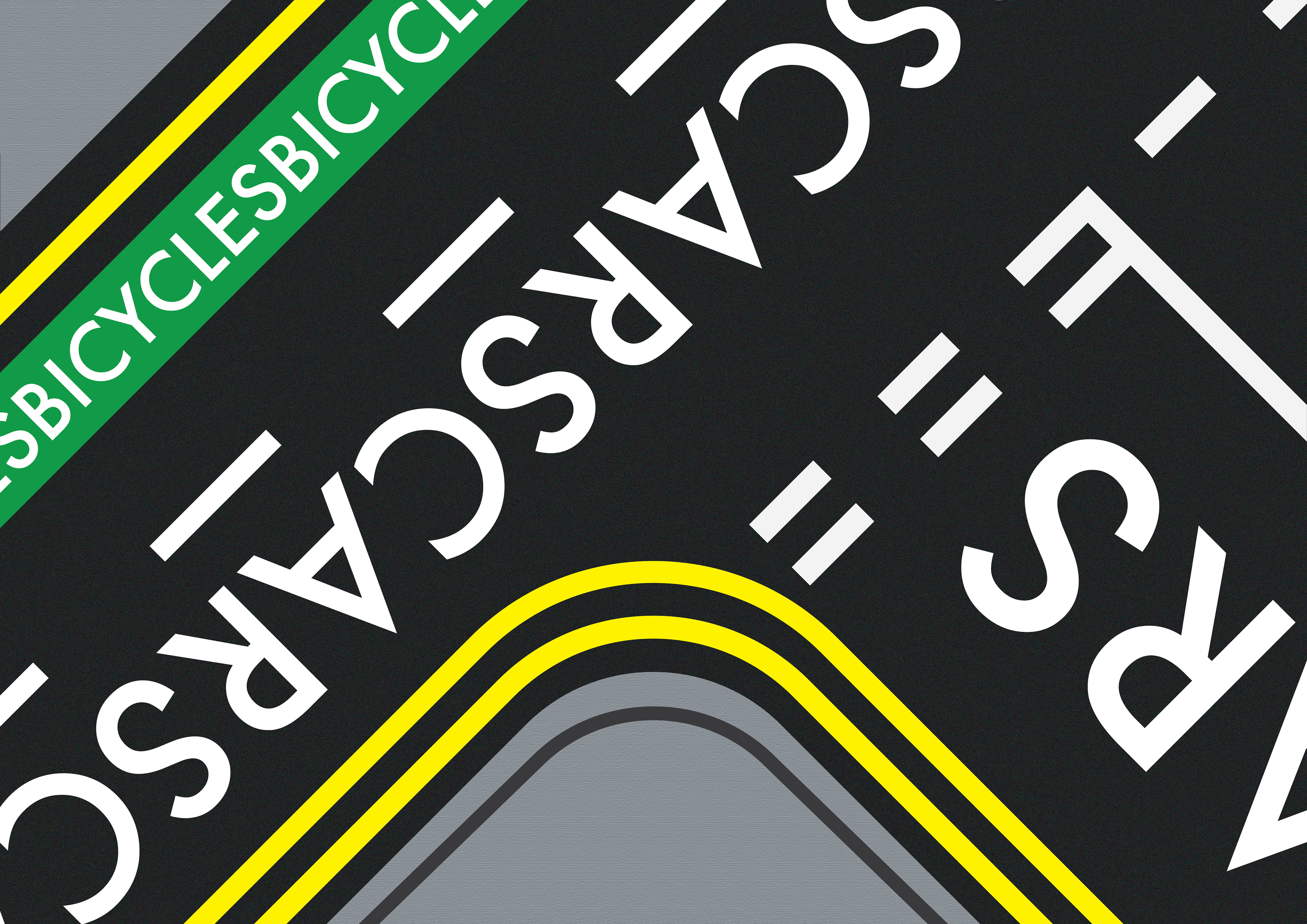
Experimental design #1

Experimental design #2
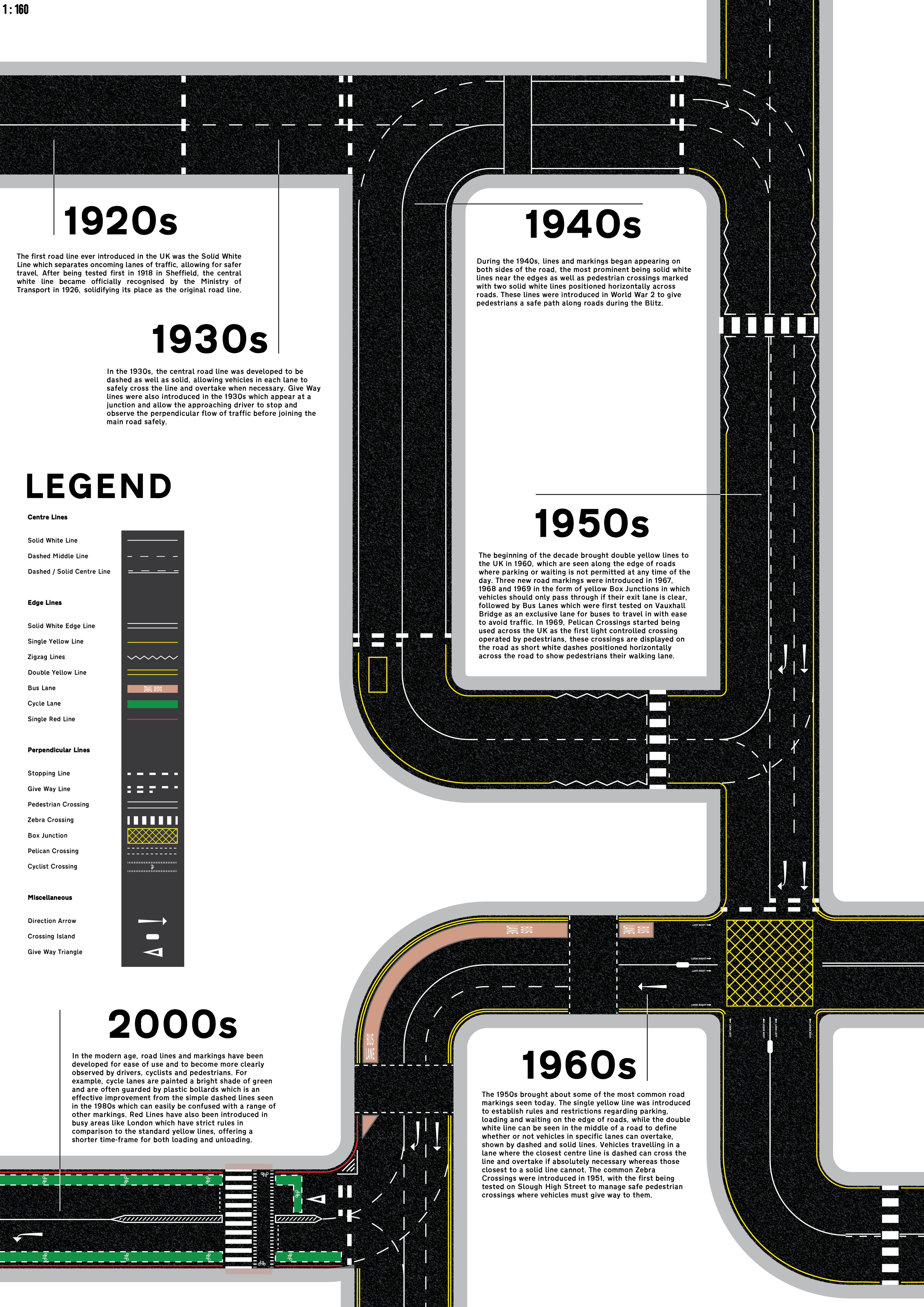
Poster WIP

Initial design

Research

Testing design styles





